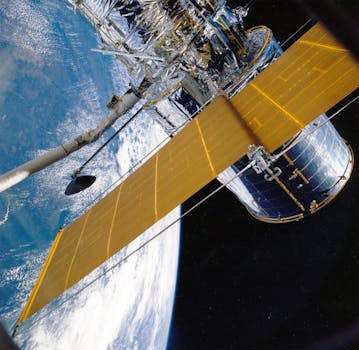
The Future of Satellites: Revolutionizing Global Connectivity
The future of satellites is rapidly evolving, with advancements in space technology and increasing demand for global connectivity. As we move forward, satellites are poised to play a crucial role in shaping the world’s communication, navigation, and remote sensing capabilities. In this article, we will delve into the latest developments and innovations in the satellite industry, and explore the exciting possibilities that lie ahead.
Advancements in Space Technology
Recent years have seen significant advancements in space technology, with the development of more efficient and cost-effective launch systems, such as reusable rockets. This has made it possible for companies like SpaceX and Blue Origin to launch satellites into orbit at a lower cost, making space more accessible to a wider range of organizations and countries. Additionally, advancements in materials and manufacturing have enabled the creation of smaller, lighter, and more powerful satellites, which can be used for a variety of applications, including Earth observation, communication, and navigation.
Increasing Demand for Global Connectivity
The demand for global connectivity is on the rise, driven by the growing need for high-speed internet access, particularly in remote and underserved areas. Satellites are well-positioned to meet this demand, as they can provide broadband connectivity to areas where traditional fiber-optic cables are not feasible. Companies like OneWeb and Amazon’s Kuiper Systems are working on launching constellations of satellites to provide global internet coverage, while others, like Intelsat and SES, are investing in next-generation satellite systems to deliver faster and more reliable connectivity.
Innovations in Satellite Design and Operation
As the satellite industry continues to evolve, we are seeing innovations in satellite design and operation. For example, the development of electric propulsion systems is enabling satellites to extend their lifespan and operate more efficiently. Additionally, advancements in artificial intelligence and machine learning are being applied to satellite operations, allowing for more autonomous and adaptive systems. Furthermore, the use of 3D printing and other advanced manufacturing techniques is enabling the creation of complex satellite components, such as antennas and solar panels, with greater precision and accuracy.
Conclusion and Future Outlook
In conclusion, the future of satellites is bright, with advancements in space technology, increasing demand for global connectivity, and innovations in satellite design and operation. As we look to the future, it is clear that satellites will play a vital role in shaping the world’s communication, navigation, and remote sensing capabilities. Whether it is providing broadband connectivity to remote areas, enabling more accurate weather forecasting, or supporting the development of autonomous vehicles, satellites are poised to have a profound impact on our daily lives.




